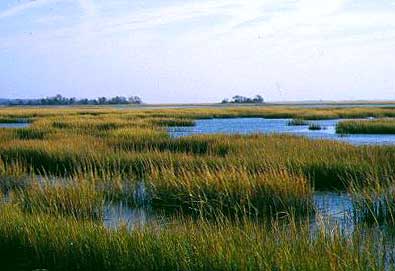Nature Coast, Alberto not the only threat

Dekle Beach is the sort of place you spent your childhood. You might have called it Rehobeth or Coney Island, Lake Minnetonka, June's Quarry or just a sand lot by the edge of town but it was your sand lot and your playmate's forever and a summer.
Lost now to development and grown over by condos and casinos, golf courses carpet the once wild dunes that hid you from your parent's view not so long ago and made for a deliciously secretive rendezvous with nature. The tide reroutes now east and west toward uncertain fishing grounds where once the water-flooded grasses inland for miles and birds simply pass over, their memory of ancient nesting sites long since faded.
Dekle Beach always resistant to the storm fury of hurricanes now faces a much greater threat, a new destiny, one not meant for remembering so much as for dismembering and the process of development in what has become twenty first century man's favorite pastime, eco-management.
The tiny enclave known as Dekle Beach is on the eastern tip of one of Florida's last pristine coastal preserves (satellite map). Located in Taylor County south of almost nothing in the corner of Florida's Big Bend region, called "Nature Coast," the natural grasslands form a barrier to storm surge and provide safe breeding ground for dozens of sea birds including the Great Cormorant, Osprey and American Bald Eagle. The sea grass beds are a vast nursery to the grouper and sea trout and they are the Gulf’s last remaining bay scallop bed.
Dekle beach remains for all intent and purpose unchanged since our childhood and our fathers before that, a sleepy corner of the world where intimacy with nature and a life far removed from the twenty first century’s distractions offer a window into simpler times and the possibility of returning to the freedom of our youth.
That may soon change. A Florida developer has purchased 3780 acres called Boggy Bay and plans to build a resort community of condominiums, homes, and a marina and business park all intended to house a community of hotels and tourism called Magnolia Bay. Lynchpin to their plan however is the proposed dredging of a 2 mile long, 100-foot-wide wide channel deep enough to accommodate 45-foot yachts, through the sea grass meadows of a publicly owned preserve. The channel, they say is key to attracting the boating enthusiasts who will become Magnolia Bay’s new residents.
Slicing the boat channel through these public lands will, according to environmentalists and local residents, drain the grasslands adding pollution and sediment from increased drainage. The clam beds will dwindle and eventually disappear as will the natural protection for sea bird nests and fish nurseries. Boggy Bay will cease to exist in name as well as fact.
The final decision weather to proceed with development of Dekle beach and surrounding grassland areas is far from certain but, for the time being at least, locals as well as potential newcomers look to Alberto, this year’s first named tropical storm as it bears down on Taylor County, and consider the wisdom of nature versus development and how we suffer when the wrong decision is made.
by Harlan Weiklke
Greener Magazine



10:22 AM









<< Home